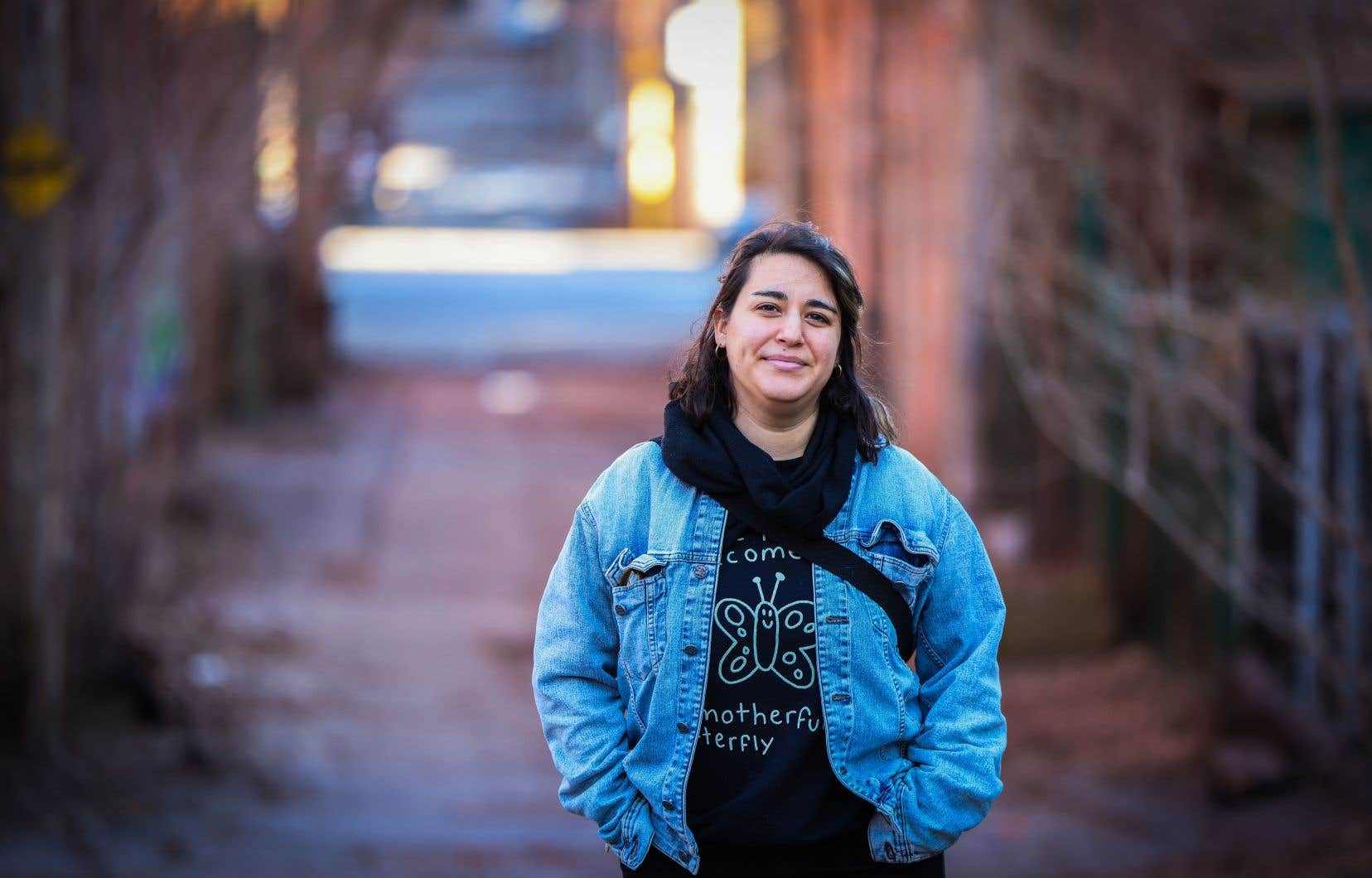The alleys of Montreal have become, over the years, green meeting places occupying an important role in the social lives of many people, notes Florence Sara G. Ferraris, author of a comprehensive book on the subject. For many, however, a question arises: does the beautification of our streets contribute to the gentrification of certain neighborhoods of the metropolis, where the less well-off feel like they are in a vice-like grip by an increase in rents and values? land?
“We wanted to pay homage to the alleys of Montreal”, which over the years have become, for many residents, a place of socialization, greened in summer, which allows us to undo “the myth” according to which Montrealers do not talk to their neighbors, relieves Mme Ferraris. His finely written work, Alleys, photographed by photographer Ariel Tarr, will be released in bookstores on March 13. “The way in which people have appropriated the alleys in our area is quite special,” notes the author, who was a journalist for several years, notably for The dutybefore joining the ranks of the City of Montreal in 2021.
Passing by the novelist Michel Tremblay, the songwriter Pierre Huet, the originator of several songs by the groups Beau Dommage and Offenbach, as well as residents with eclectic backgrounds, the two women traveled the metropolis to document the role of these urban developments in the daily lives of Montrealers who have appropriated these spaces, particularly in the context of the City’s “green alleys” program. Around a tenth of the metropolis’s approximately 4,000 alleys have so far received municipal funding to ensure their redevelopment in order to calm road traffic while installing street furniture and planting various plants, all in order to that these spaces contribute to the fight against heat islands while improving the management of river water in the metropolis.
“The green alleys are greening, but above all it is the community,” notes in an interview the coordinator of the South-West eco-district, Luis Gomez, who regularly accompanies citizens who come together to beautify and green their alley. “The alleys are changing in a profound way, and it’s a miracle,” says Mr. Gomez, who notes that the redevelopment of them is mobilizing more and more citizens. Thus, only in the South-West district, around ten green alley projects are submitted by groups of citizens each year, he notes. The district then carries out some of these projects, which in some cases involve demineralizing spaces in order to then green them.
While crisscrossing the metropolis, Florence Sara G. Ferraris was however able to note that many alleys which have not received any funding from the City to become green spaces have nevertheless undergone a profound metamorphosis thanks to the mobilization of residents neighboring those -this.
“There are places where there has never been any involvement of public authorities or an organization [pour en financer l’aménagement]but the alley is already green and very humanized,” underlines Mme Ferraris. “What we see is that the desire of Montrealers to live in this space can be found in all neighborhoods,” she continues.
The gentrification of alleys
By making neighboring properties more attractive, green alleys can, however, contribute to an increase in the value of surrounding properties, which contributes to the gentrification of areas from which less affluent residents feel increasingly excluded. This is also a problem addressed in a study published in 2022 and carried out by urban studies professors at the University of Quebec at Montreal Hiên Pham and Ugo Lachapelle.
“In house sales offers, we announce that there is a green alley behind the house to justify the quality of life surrounding this property,” underlines Hiên Pham, in an interview with Duty. This is a sign that green lanes can increase property values. »
There are places where there has never been any involvement of public authorities or an organization [pour en financer l’aménagement]but the alley is already green and very humanized
However, it is difficult to establish whether green alleys are a cause or a consequence of gentrification, a complex phenomenon which has many roots, specifies Ugo Lachapelle. “The green alley could create an upward effect on housing prices, but, after that, are it people who are a little better off who manage to organize themselves to create green alleys or is it Are it the green streets that attract wealthier people? It’s difficult to say,” explains the professor.
“It is certain that ecogentrification is a phenomenon that worries us, and it is not easy to resolve,” notes Luis Gomez, from the South-West eco-district. However, “we cannot simply say that we are going to stop intervening in neighborhoods because it will create gentrification,” underlines Florence Sara G. Ferraris, several neighborhoods in Montreal remaining to this day grappling with a lack Green spaces.
Planning
In this context, Hiên Pham believes that better planning for the development of green alleys is necessary in the metropolis, both so that they are better maintained and distributed across the territory and to prevent “the perverse effects of gentrification » that these could generate.
It is certain that ecogentrification is a phenomenon that worries us, and it is not easy to resolve
“If one day we are able to prove that, yes, gentrification is caused by the arrival of green alleys, it will be too late to counter the effects of this process,” warns the professor, according to whom the City must have the “courage” to review your involvement in the development of these projects so that they are inclusive in the long term. “If we really want to take the issue of gentrification into account, we must include housing stakeholders in the conversation,” she notes.
“Ultimately, the real answer to fighting gentrification is investments in housing, which we need,” notes Florence Sara G. Ferraris. The real crux is there. »
